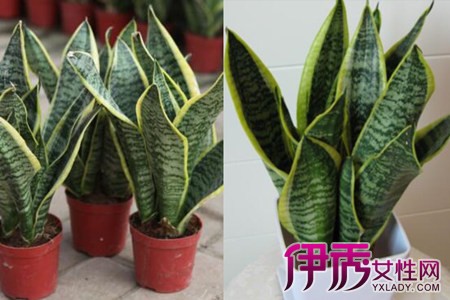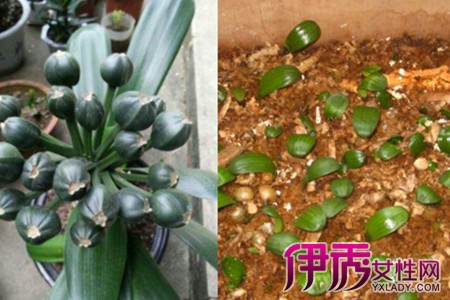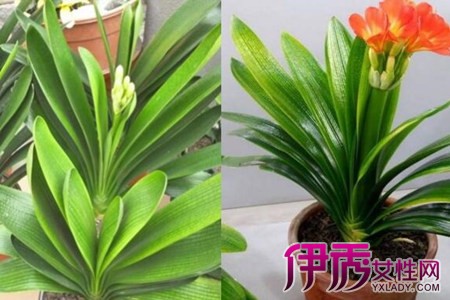Master the breeding method of Tiger Pilan and the master of floral art will teach you how to grow flowers.

In fact, the breeding of Tiger Pilan is not difficult at all. Tiger Pilan itself is a good breeding plant, so mastering the habits of Tiger Pilan will certainly be able to reproduce more luxuriantly. Tiger Pilan's requirements for flowerpots are not very high, and many people like to put them in the living room in order to choose large and high flowerpots to grow luxuriantly. But if you want to put it on the table, choose the mini potted plant, which is also very beautiful.
To choose a good flowerpot is to find the suitable soil, and basically every kind of flower likes fluffy soil. The rigid loess has no way to let the tiger skin orchid take root and grow, and the leaves will soften, so it is a good choice to choose the black soil after the rotten branches and leaves under the tree.
For the reproduction of tiger orchid, it is also necessary to master the humidity, and many people feel that they need to be watered every day in order to grow better. In fact, for tiger orchid breeding, do not always water, about 2-3 days watering can, before watering can use your hands to press the soil inside the flowerpot, not dry cases can not be watered for the time being.
Tiger Pilan is a sunny plant, which should be put in the morning sun when raising tiger Pilan. Only when there is plenty of sunshine can you grow more vigorously, but you can't put it outdoors in the sun, because it will soften the leaves. It is more appropriate to put it on the indoor windowsill, and the sun can reproduce luxuriantly.
When raising tiger orchid, we should also pay attention to the temperature. the temperature suitable for growth needs about 23 degrees. In the north, the outdoor temperature in winter has always been below zero, so it is necessary to put tiger skin orchid indoors. If you put it outdoors, you will definitely freeze to death, so you can only breed again. Raising Tiger Pilan is as simple as that.
Tiger skin orchid propagation method, step diagram of tiger skin orchid propagation method
Tiger skin orchid leaf insertion propagation method, first of all, tiger skin orchid (tiger tail orchid) is a very common home decoration plant, but the family cultivation often does not bloom, so mainly to appreciate the leaves. The maintenance of tiger skin orchid is very simple, as long as you need to keep the environment warm and less watering to ensure normal growth. Although it is not easy to blossom at home, you can still see the fragrant appearance if the water and fertilizer are properly protected. A bunch of white flowers look very chic.
Diagram of propagation method of tiger skin orchid
Can you miss the first choice of green plants for indoor homes like Tiger Pilan? And the cuttage propagation of the leaves of Hu Pilan is very easy, and the novice can achieve it in 3 steps. Let's take a look at the diagram of the propagation steps of tiger orchid leaves.
The time of leaf insertion and propagation: the suitable period for leaf insertion is spring and summer.
Step 1: cut the leaves into segments
Need to prepare sharp blades or garden scissors, select the stronger tiger skin orchid leaves, cut the leaves into segments every 6 cm or so, mark the top and bottom of each section, and leave them in indoor shade for 1-2 days before you can start the second step.
Step 2: insert the leaf fragments into the soil
The dried leaves can be cut directly (or stained with some rooting powder) on the bed with loose, fertile and well-drained sand as the substrate to maintain humidity and rooting in about 20-50 days. Cutting according to the mark top up and bottom down can not be inverted, inserted into the soil about 2-3 cm.
Step 3: the maintenance of leaves after insertion
After the tiger skin orchid leaves are inserted, keep the growing environment to avoid exposure to the sun, ventilation, temperature 18-25 degrees, wet can, first of all, grow roots, slowly will grow small buds, need a lot of patience. After taking root, it can be transplanting and potting.
The method of Cuttage Propagation of Tiger skin Orchid how to raise it in winter
Although the tiger skin orchid does not often bloom and its appearance is not as gorgeous as other flower varieties, it does not affect people's love for it. It is often used in the living room and office, it not only has a high ornamental value, it can absorb formaldehyde, purify the air this characteristic is also incomparable to general flowers. And for the flower lovers who want to raise it, of course, they are most concerned about its breeding method.
The method of Cuttage Propagation of Polygonum cuspidatum
1. Cutting propagation time
Cymbidium can be propagated by cuttage all the year round.
2. Selection of cuttings.
Medium and large species of tiger tail orchid is suitable for split leaf cutting, and small species of tiger tail orchid is suitable for whole leaf cutting. healthy and thick leaves should be selected as cuttings.
3. Methods of cutting propagation.
Cut the leaf into several pieces with an equal distance of 5-8 cm, and insert the leaf block obliquely into a clean medium, which should first be soaked with water and placed in a semi-shady place to wait for the cuttings to sprout. When the seedlings grow out, they can be transplanted to a larger round basin to raise seedlings.
How to raise tiger skin orchid in winter
1. Curing temperature
Tiger skin orchid likes a relatively warm growing environment, and its suitable growth temperature is between 20 ℃ and 30 ℃, and the overwintering temperature in winter should not be lower than 10 ℃. So when raising Tiger Pilan in winter, try not to put it outdoors.
2. Controlled watering
The general temperature in winter is relatively low, Hu Pilan is a desert plant, more afraid of frozen leaves afraid of waterlogging, so it is best to control watering in winter. Wait until spring to resume watering. If the room is not warm enough, it is best to stop watering and wait until the temperature picks up.
3. Do not apply fertilizer
In winter, the growth of Hu Pilan slows down, and a lot of fertilizer is not needed at this time, because the demand for fertilizer is not very high in winter.
4. Anti-freezing in winter
Tiger skin orchid in winter, must pay attention to anti-freezing, because tiger skin orchid is a plant with relatively high water content in leaves, if frozen in winter, the cells will break, causing its death. Therefore, we should pay attention to anti-freezing, do not say that tiger skin orchid is dead.
Disease and control of tiger skin orchid
1. Leaf spot
Harmful symptoms: mainly occurred in the leaves, the leaves appeared nearly round or oblong spots at the initial stage, the edge of the spot was light yellow, slightly sunken. The disease spot of the leaf is easy to fuse, the leaf is dead, and the disease spot is shedding and perforating in the later stage. Disease spots near the ground are prone to rot, resulting in stem base rot or whole plant folding.
Control methods: reduce watering in the process of maintenance, keep the soil slightly wet and reduce the soil moisture, which can effectively prevent leaf spot disease. During the onset of the disease, Bordeaux solution can be selected at the initial stage, and 2000 dry suspension can be killed by 53.8%. It is sprayed 2-3 times continuously, with an interval of 5-7 days. Change the agent timely during spraying to prevent the plant from developing drug resistance.
2. Rot disease
Harmful symptoms: at the initial stage of the disease, water-stained disease spots will appear on the plant leaves, and after gradually expanding, the disease spots will be round to irregular, dark gray, soft rot, slightly sunken; then the disease spots dry and sunken, and black mildew spots will appear on the leaves in the humid environment.
Prevention and treatment: remove the diseased leaves in time when diseased plants are found, and change pots and soil. The soil should be disinfected before replanting. When the disease is serious, spray 50% carbendazim or methyl topiramate 800 times solution, once every 5-7 days, can be stopped as soon as it is good.
3. Bacterial soft rot
Harmful symptoms: after the plant is infected, the leaves will change from green to light yellow to grayish yellow, and the stem base near the ground will appear water-stained soft rot, which will gradually fold in the later stage, and the roots will rot and die.
Prevention and control methods: the temperature in winter and spring should be controlled above 10 ℃, watering should be controlled and shade should be properly shaded. In the peak growing season in spring and autumn, appropriate application of phosphorus and potassium fertilizer can improve the disease resistance of the plant. Remove the diseased plant and clean it up in time. If found in time, you can choose streptomycin sulfate 2000 times solution, 5-7 days spraying once, continuous spraying 2-3 times.
How does tiger skin orchid propagate in separate plants
1. Cutting
Sparse do not need to tube, here is mainly to cut the dense tiger skin orchid leaf clump into several clumps. There should be not only leaves but also rhizomes and sucking buds on each foliage. Only in this way can Hu Pilan survive.
2. Potted planting
First of all, spread a layer of culture soil at the bottom of the flowerpot, then place the leaves of Hu Pilan evenly in the flowerpot from one side of the flowerpot, and finally, fill the gaps in the flowerpot with the culture soil.
3. Maintenance
Do not put it after planting in the pot. Water should be watered for the first time, and then the amount of water should be controlled.
4. Points for attention of ramet
When cutting, try to make the roots on each clump a little more evenly, and try to avoid damaging the roots, and of course, don't hurt yourself.
The planted tiger skin orchid should be taken care of in a cool place and moved into the house on rainy days. It should not be caught in the rain for a long time to prevent the roots from rotting.
Although Tiger Pilan has a very strong ability to adapt to the environment, it is still necessary to control key factors such as light, water and fertilizer after family breeding. In the later stage, we should also prevent more diseases and insect pests. There are detailed prevention and control methods above. If these can be done well, then the growth of Tiger Pilan will not be very bad, and there may be beautiful florets.
- Prev

Understand the seed planting method of Cymbidium to let the flowers multiply smoothly.
The gentleman orchid has always been called the gentleman in the flower, and many people want to raise more and more of the gentleman orchid in the family. But if you don't know how to breed, you can only keep buying new flowers. today we're going to talk about the sowing method of Magnolia. I hope it can help you.
- Next

Mastering the seed planting method of Cymbidium is more luxuriant in the flowering period.
When it comes to the cultivation of Cymbidium, many people say that when they encounter rotten roots or other problems, they always find it difficult to survive. In fact, we should pay attention to the methods of breeding this kind of plant, so let's share the breeding skills below.
Related
- Fuxing push coffee new agricultural production and marketing class: lack of small-scale processing plants
- Jujube rice field leisure farm deep ploughing Yilan for five years to create a space for organic food and play
- Nongyu Farm-A trial of organic papaya for brave women with advanced technology
- Four points for attention in the prevention and control of diseases and insect pests of edible fungi
- How to add nutrient solution to Edible Fungi
- Is there any good way to control edible fungus mites?
- Open Inoculation Technology of Edible Fungi
- Is there any clever way to use fertilizer for edible fungus in winter?
- What agents are used to kill the pathogens of edible fungi in the mushroom shed?
- Rapid drying of Edible Fungi

